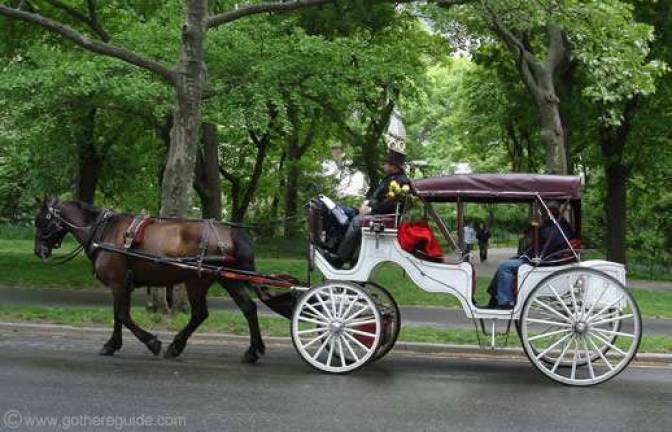Where Have All the Carriage Horses Gone?

New study shows high turnover of NYC carriage horses, but the city can't say what happened to them
A new study commissioned by the Coalition to Ban Horse-Drawn Carriages shows that over the past seven years, a minimum of 529 carriage horses have fallen off the rolls of the NYC Department of Health, the agency charged with oversight of these animals.
"While we know that some died and a few were rescued, the vast majority have simply disappeared," said to Elizabeth Forel, president of the Coalition to Ban Horse-Drawn Carriages. "Where did they go?"
"Some 200 horses are registered with the Department of Health annually," Forel said, adding that "for 529 to have no accountability is deeply disturbing. Did they die of neglect, abuse or just old age? Were they sent to auction and sold? Or did they get a good home? People care about these horses and want to know."
The NYC Administration Code ? Section 17-329 does not require the names of buyers if the horse is sold outside New York City, as most are. "It is very possible a horse could go either directly or indirectly to the auctions frequented by kill buyers," Forel said. A kill buyer is a middle man who purchases horses mostly at auction with the intent of fulfilling his contract with slaughter houses. The Equine Welfare Alliance reports that 176,223 US horses were sent to slaughterhouses in Canada and Mexico in 2012 where their meat was processed to be sent overseas for human consumption.
Beginning in 2005, the Coalition periodically requested lists of registered horses through the Freedom of Information Law and compared them to see which were no longer registered and which were new. The numbers represented a snapshot of the date each report was run so it is possible some horses could have been on the registry and removed within that period and thus, never counted.
Not all horses are as fortunate as one named Billy. After being sold to a kill buyer, he was repurchased by the Coalition in 2010 and is now living out his golden years - renamed Bobby ll Freedom - at Equine Advocates Sanctuary in Chatham, NY.
IN 2011, the Coalition to Ban Horse-Drawn Carriages asked Council Member Melissa Mark Viverito to sponsor a bill, Intro 670, that would require that carriage horse owners abide by certain rules when selling their horses. The owner would be required to sell or donate his horse to a private individual or sanctuary that signs an assurance the animal would not be sold and would be kept as a companion animal and not employed in another carriage business. They would not be allowed to sell their horse at auction. Complete records would be required to be sent to the Department of Health. This is quite different from what happens now and is designed to make the owners accountable to the horses they use. The press conference for the proposed legislation was canceled the night before and the bill subsequently died.
Since that time, more than 116 horses have fallen off the rolls.
The Coalition is asking for future accountability for the many horses that continue to go through the system ? and asking the question what happened to all those horses who are no longer in the system. They are also asking for Intro 670 to be revived and passed into law.
A summary of the Coalition's Excel spread sheet report above. The 21 page Coalition report and the original Department of Health horse lists are available upon request to coalition@banhdc.org